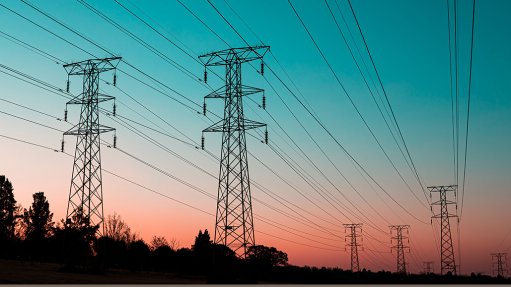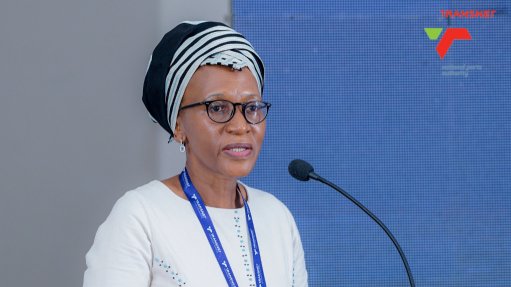Much faster progress on energy efficiency needed to meet global 2030 goal – IEA
One year on from the global pledge made at COP28 to double the rate of energy efficiency improvements by 2030, new analysis from the International Energy Agency (IEA) suggests that countries are not yet on track to meet this goal, requiring stronger action and cooperation to align with their stated ambitions.
In its ‘Energy Efficiency 2024’ report, the IEA states that global primary energy intensity – a measure of efficiency – is set to improve by about 1% this year.
This is the same rate as in 2023, and around half of the average rate between 2010 and 2019.
At the COP28 climate change conference in Dubai last year, the IEA points out, nearly 200 countries agreed to the goal of doubling the rate of progress, which would mean increasing it from 2% in 2022 to 4% by 2030.
“Boosting energy efficiency is about getting more from everyday technologies and industrial processes for the same amount of energy input, and means more jobs, healthier cities and a range of other benefits.
“Improving the efficiency of buildings and vehicles, as well as in other areas, is central to clean energy transitions, since it simultaneously improves energy security, lowers energy bills for consumers and reduces greenhouse-gas emissions,” it adds.
The new report shows that governments worldwide are making policy progress, with those representing more than 70% of global energy demand implementing new or updated efficiency policies this year.
The EU, for example, revised regulations to achieve a zero-emission building stock by 2050; China overhauled appliance standards and strengthened national targets for efficiency; the US tightened its fuel economy standards for heavy-duty vehicles; and Kenya made its building code mandatory to ensure all new buildings are more efficient.
However, to align with global targets, fresh policies globally need to be adopted more quickly, and many existing polices need to be tightened, according to the report.
“Energy efficiency is a key pillar of secure, affordable and inclusive energy transitions. The IEA is working closer than ever with governments around the world to ensure that it remains a top policy priority.
“Fortunately, the policies and technologies to accelerate efficiency progress are readily available today, and many governments are taking important steps forward. What we hope to see now is faster and stronger policy responses across the globe,” says IEA executive director Fatih Birol.
Moreover, to increase visibility on energy efficiency and support stronger progress towards the global doubling target, the IEA launched a new Energy Efficiency Progress Tracker on November 7 alongside the report – extending the analysis of the report to provide detailed insights using the most up-to-date regional indicators on energy intensity, demand and electrification levels.
This complements the agency’s wider analytical support for governments, such as the IEA Energy Efficiency Policy Toolkits that are published annually.
According to the new report, there are important elements of progress worth noting, especially in major emerging economies and in the growing global deployment rates of heat pumps and electric vehicles, which generally use much less energy than the technologies they replace.
It explains, however, that greater efficiency will need substantially more investment, noting that investment in energy efficient technologies grew by 4% this year and is on course to reach a record $660-billion.
“New IEA analysis reveals that efficient technologies do not necessarily cost more to buy than less efficient ones, and often cost much less over their lifetime, since they are cheaper to run. Best-in-class air conditioners, for example, can save up to 40% in total costs compared with inefficient ones,” the IEA says.
Article Enquiry
Email Article
Save Article
Feedback
To advertise email advertising@creamermedia.co.za or click here
Comments
Announcements
What's On
Subscribe to improve your user experience...
Option 1 (equivalent of R125 a month):
Receive a weekly copy of Creamer Media's Engineering News & Mining Weekly magazine
(print copy for those in South Africa and e-magazine for those outside of South Africa)
Receive daily email newsletters
Access to full search results
Access archive of magazine back copies
Access to Projects in Progress
Access to ONE Research Report of your choice in PDF format
Option 2 (equivalent of R375 a month):
All benefits from Option 1
PLUS
Access to Creamer Media's Research Channel Africa for ALL Research Reports, in PDF format, on various industrial and mining sectors
including Electricity; Water; Energy Transition; Hydrogen; Roads, Rail and Ports; Coal; Gold; Platinum; Battery Metals; etc.
Already a subscriber?
Forgotten your password?
Receive weekly copy of Creamer Media's Engineering News & Mining Weekly magazine (print copy for those in South Africa and e-magazine for those outside of South Africa)
➕
Recieve daily email newsletters
➕
Access to full search results
➕
Access archive of magazine back copies
➕
Access to Projects in Progress
➕
Access to ONE Research Report of your choice in PDF format
RESEARCH CHANNEL AFRICA
R4500 (equivalent of R375 a month)
SUBSCRIBEAll benefits from Option 1
➕
Access to Creamer Media's Research Channel Africa for ALL Research Reports on various industrial and mining sectors, in PDF format, including on:
Electricity
➕
Water
➕
Energy Transition
➕
Hydrogen
➕
Roads, Rail and Ports
➕
Coal
➕
Gold
➕
Platinum
➕
Battery Metals
➕
etc.
Receive all benefits from Option 1 or Option 2 delivered to numerous people at your company
➕
Multiple User names and Passwords for simultaneous log-ins
➕
Intranet integration access to all in your organisation


















